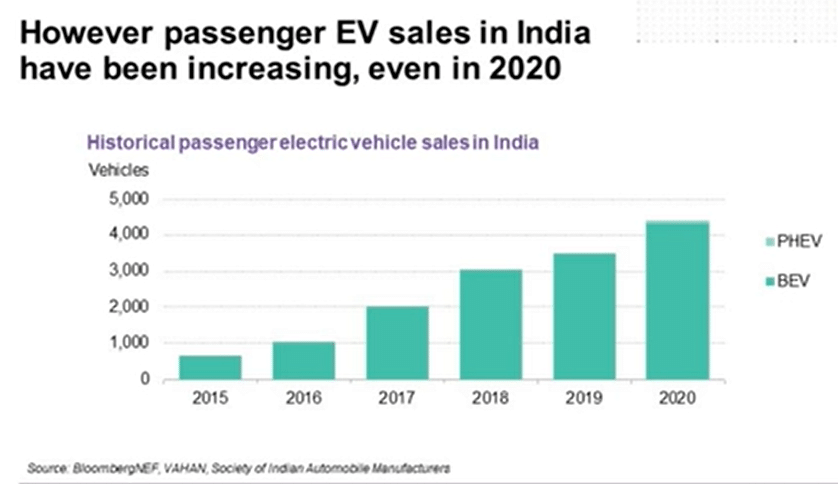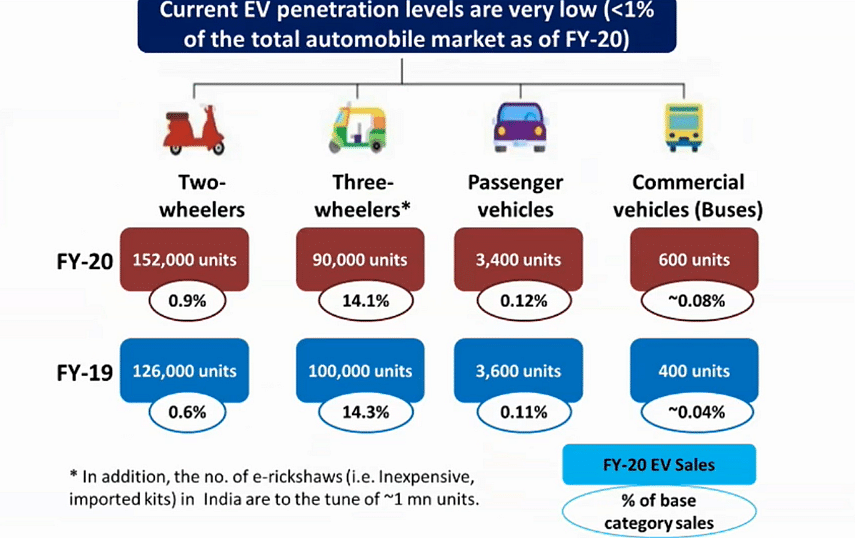Tech-agnostic roadmap vital for cleaner mobility in India: industry leaders at SIAM Convention
Industry leaders deliberate on the use of multiple alternate propulsion technologies to reduce India’s carbon footprint from transportation.
As the transportation and mobility landscape the world over undergoes a marked shift towards cleaner and greener propulsion solutions including hybrids, electric vehicles (EVs) and fuel-cell technology, India is also on the cusp of adopting some of these technologies, and more, to improve its air pollution when 14 out of world’s 15 most-polluted cities are from the country.
The 61st SIAM annual convention invited industry experts to deliberate on the topic – ‘Crystal Ball Gazing – Future of Mobility in India’, and while it was apparent that different experts had different ideas which could be relevant in the Indian context, everything converged at the single juncture of minimising emissions and inducing green transportation for the citizens.
Vikram Kirloskar, chairman, SIAM PV CEOs Council and vice-chairman, Toyota Kirloskar Motor, said, “The direction provided by the Prime Minister during the Independence Day speech for an ‘Energy Independent’ India by 2047 is truly visionary not only for the goal it sets but also by providing a pathway of choosing diverse energy mix that leverages our unique strengths and best exploits India’s true potential.
“To realise India’s goals of energy security and countering climate change we must lay equal emphasis on enhancing energy efficiency as we do for fossil fuel substitution, leverage all technologies as technology is only an enabler - a means to the end and is ever evolving, and broaden our horizon to take a more holistic and systems-based approach of ‘well-to-wheel’ and ‘life-cycle’ analysis for impact of our products on CO2 emission.”
Nomura Research Institute’s chairman, president and CEO, Shingo Konomoto, made a detailed presentation India’s potential of becoming a US$ 60 trillion economy by 2060 with greater urbanisation leading to higher motorisation and in a sense, giving way to increased pollution, road accidents and traffic congestion.
As a result, India could take learnings from Japan’s experience of dealing with similar challenges in the past and adopting next-gen powertrain-hybridisation solutions, including fully battery electric vehicles.
Moreover, implementation of an intelligent transport systems (ITS) akin to Japan, could lead to up to 50 percent reduction in traffic congestion, which, in case of Japan, is further augmented by the high-speed ‘Shinkansen’ rail system that aids decarbonisation as well.
Given India’s population diversity including people belonging to different strata of the society, the Nomura chairman also stressed upon the need for inclusive transportation to enable affordability and accessibility to all. Furthermore, with the recent advancements in safety regulations aligned with the UNECE norms, the augmentation would involve strengthening the road infrastructure to support advanced technologies including ADAS and also setting up of back-end safety services such as an emergency-call response system.
Dr Ali Izadi, head of Asia Pacific Research, BloombergNEF, South Korea, focused on the electrification opportunities for India especially with EVs registering an exponential rise globally and reaching 4 percent of the overall passenger vehicle sales with a fleet size of almost 10 million units. However, the sizeable part of the growth having come from European countries and China.
Izadi said that improvements in model availability as well as supporting government policies are going to drive EV sales in the short term in India, with a projection that EVs would contribute up to 53 percent of the total PV volumes by 2040 purely considering the cost economy.
Battery prices too are set to dip below US$ 100 by 2024, finally settling around the US$ 70 mark, giving a push to these zero-emission vehicles.

However, in the Indian context, two- and three-wheelers continue to be the low-hanging fruit for electrification and commercial vehicles, especially heavy trucks and buses would look at alternate propulsion solutions to lower carbon emissions.
Arun Goel, secretary, Ministry of Heavy Industries, Government of India, said that India must set its focus on green vehicles, including hybrids, plug-ins or battery-electric vehicles and flex-fuel vehicles as well. The recent revisions in FAME II incentives are also aimed to bring a price parity in the acquisition cost of an EV with ICE counterpart and not purely from a total-cost-of-ownership perspective.
“The IC engine has been the guiding force over the last century, but even there India has been a follower and not a leader. Now, we have a huge opportunity to take charge and lead the EV race, Goel said.
He further mentioned that the Indian auto industry comprises more than a third of the country’s manufacturing GDP and now need to enhance implementation of advanced manufacturing technologies such as Industry 4.0 which are globally pegged to grow from 18 percent currently to over 30 percent by 2030. In the Indian context, such advanced technologies only comprise 3 percent of the overall manufacturing.
Goel also stressed upon India Auto Inc’s need to up its technical capabilities and conduct more developmental work in the country. “The Department of Heavy Industries has launched six programmes with ARAI, BHEL, IIT Madras among others, and we are now attempting these platforms to be accelerators,” he said.
The Secretary of the Ministry of Petroleum and Natural Gas, Government of India, Tarun Kapoor remains a proponent of electric vehicles and confirmed that the government is installing EV chargers at over 50,000 of the total 75,000 fuel stations across India, barring those in remote rural areas.
Focusing on green propulsion and a means of cutting down India’s sizeable crude import, CNG is also one of the key arenas for the government which is fast tracking the setting up of 10,000 new CNG pumps across India. To align the government’s efforts with the industry, Kapoor said, “Presently, there are large number of retrofitted CNG vehicles on the road, but we would want to have high-quality, factory-fitted CNG cars on the roads.”
“CNG will continue to be our focus as far as buses are concerned, though EV buses are also getting developed in a big way, but CNG implementation is easier. We are also urging manufacturers to bring CNG tractors. The advantage with CNG is that the back-end pipeline network is coming up very fast and will speedily cover almost the entire country,” he added.
This will allow the blending of biogas and hydrogen in CNG as the next step wherein a hydrogen blend up to 3 percent could be easily achieved in India.
Dr VK Saraswat, member, NITI Aayog, said that mobility has taken a major turn after the pandemic with public and shared transportation taking a backseat. However, ride hailing continues to be prevalent over ride sharing.
With a global penetration level projected at 92 percent by 2050 over 3 percent presently and with India having a mandate of up to 30 percent electrification by 2030 as well, the NITI Aayog representative accorded hybrids to be the big stepping stones towards full electrification.

Moreover, the country has another opportunity to develop and localise EV components such as battery, drivetrain and chassis, and to an extent see local manufacturing of li-ion cells in India as well.
Chargers, charging stations and battery swapping are also avenues where India has high potential but low traction at the moment as per NITI Aayog’s study.
ALSO READ Nitin Gadkari: “OEMs should discourage diesel vehicle sales and focus on alternate fuels.
Recycling and affordability of EVs take centrestage at SIAM Convention
Localisation vital as Indian OEMs drive into electric avenue
RELATED ARTICLES
Cosmo First diversifies into paint protection film and ceramic coatings
The Aurangabad, Maharashtra-based packaging materials supplier is leveraging its competencies in plastic films and speci...
JSW MG Motor India confident of selling 1,000 M9 electric MPVs in first year
The 5.2-metre-long, seven-seater luxury electric MPV, which will be locally assembled at the Halol plant in Gujarat, wil...
Modern Automotives targets 25% CAGR in forged components by FY2031, diversifies into e-3Ws
The Tier-1 component supplier of forged components such as connecting rods, crankshafts, tie-rods, and fork bridges to l...






 26 Aug 2021
26 Aug 2021
 4785 Views
4785 Views





 Autocar Professional Bureau
Autocar Professional Bureau




